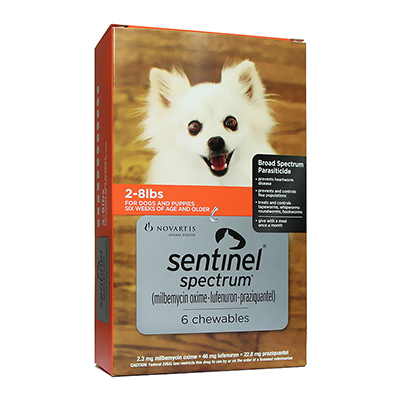 Tapeworms are endoparasites that feed on the intestinal walls of the dog’s body. They draw nutrition and lay eggs that are often eliminated through the natural fecal process. Worm eggs that stay inside of the body mature and reproduce whereas the ones that are excreted along with stool go on infecting the environment. Some of them also reside in the anal sac which causes inconvenience and itching in the hind region of the dog, leading him to scoot on the floor or on a rough surface. Dogs usually end up getting tapeworms when they accidentally ingest a flea or fleas that contain tapeworm eggs in their system.
Tapeworms are endoparasites that feed on the intestinal walls of the dog’s body. They draw nutrition and lay eggs that are often eliminated through the natural fecal process. Worm eggs that stay inside of the body mature and reproduce whereas the ones that are excreted along with stool go on infecting the environment. Some of them also reside in the anal sac which causes inconvenience and itching in the hind region of the dog, leading him to scoot on the floor or on a rough surface. Dogs usually end up getting tapeworms when they accidentally ingest a flea or fleas that contain tapeworm eggs in their system.
Tapeworm Anatomy
Tapeworms have a long, white, flat segmented, grainy appearance with a knob like head that has hooks to fix itself to the intestinal walls. Each segment is known as a proglottid and has its own nucleus to produce a new worm on its own. When the tapeworm has to release eggs it detaches its posterior segments that finally get eliminated during the fecal process. Eggs that lie inside the body go onto mature into adult tapeworms and the cycle continues. Dipylidium caninum is the species that affects canines and felines the most and can be as long as 8 inches in length.
Diagnosis Of Tapeworms in Dogs
Diagnostic procedure of tapeworm includes an examination of feces and blood test for detecting tissue invasive infection if any. A vet may also conduct a CT scan, MRI scan, x-rays or ultrasound to determine the level of infection caused by the tapeworms in the dog’s body.
 Get Sentinel Spectrum at Lowest Price here | Free Shipping!
Get Sentinel Spectrum at Lowest Price here | Free Shipping!
Treatment For Tapeworms in Dogs
Praziquantel is a known drug that treats tapeworms effectively. It is either administered by injection or can be given orally as a tablet. Other treatments also include granules that are easy to sprinkle on the food of the pet or chewable those come with a palatable flavor. Combination treatments are also highly effective in treating multiple worm infections caused by whipworms, hookworms, tapeworms, and roundworms. The vet’s advice parents to complete their dog’s worming course so that all the traces of infection are successfully eliminated.
Tapeworm Prevention in Dogs
- The foremost step to keep your pet sans tapeworm infection is to prevent the flea infestation in your dog. Fleas are the most common source of tapeworm infection in pets hence using monthly preventatives is the only way to protect your dog from getting infected.
- Dispose of any sort of feces in and around the house before it harbors worms and bacteria.
- Keep the dog away from places that are filthy and full of feces and trash.
- Use household flea spray to prevent the infestation inside your house and make sure you wash your dog’s beddings and belongings regularly.
- Keep your dog well-groomed so fleas don’t get attracted to him.
- Always wash his paws after he returns from outdoors.
- Pay vet visits every month for his complete health check-up.
Takeaway: Dogs can easily catch worm infection by ingesting feces, soil that contains worm eggs or through fleas. Thus it is the pet parent’s responsibility to stay vigilant of their pet’s activity, especially puppies because they are frivolous and love to play in filth. Also, make sure you don’t skip de-worming them every 3 to 4 months.
You may also like to read Natural Remedies and Guidelines to Deworm a Pet.






